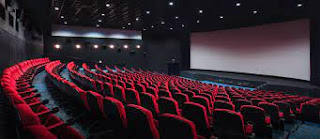History of Cinema
The history of cinema is a fascinating journey that spans over a century, marked by technological advancements, artistic innovations, and societal changes. It all began in the late 19th century when inventors and visionaries started experimenting with motion pictures. The birth of cinema is often attributed to the Lumière brothers, Auguste and Louis Lumière, who held the first public screening of films in Paris in 1895. This event marked the beginning of a new era in entertainment and communication.
The early films were short, silent, and in black and white. They were often simple scenes capturing everyday life, like workers leaving a factory or a train arriving at a station. However, these seemingly mundane images captivated audiences who had never seen moving pictures before. The novelty of cinema quickly spread across the globe, and filmmakers started exploring the possibilities of this new medium.
The silent era of cinema, which lasted until the late 1920s, produced some iconic films and pioneering directors. Filmmakers like D.W. Griffith, known for "The Birth of a Nation" (1915), and Sergei Eisenstein, famous for "Battleship Potemkin" (1925), pushed the boundaries of storytelling and visual language. Silent film stars like Charlie Chaplin and Buster Keaton became household names, relying on physical comedy and expressive acting to convey emotions without spoken words.
The introduction of synchronized sound in the late 1920s revolutionized cinema. "The Jazz Singer" (1927) is often considered the first feature film with synchronized dialogue sequences, and it marked the end of the silent era. The transition to sound had a profound impact on filmmaking, influencing storytelling and character development. Musicals and talkies became popular genres, and studios invested heavily in sound technology.
The 1930s and 1940s are often referred to as the Golden Age of Hollywood. Studios like MGM, Warner Bros., and Paramount produced a vast array of classic films, and iconic stars like Clark Gable, Bette Davis, and Humphrey Bogart graced the silver screen. The studio system dominated the industry, with actors, directors, and writers often under exclusive contracts. Genres like film noir, screwball comedy, and musicals flourished during this period.
World War II had a significant impact on global cinema. In Europe, filmmakers like Roberto Rossellini and Vittorio De Sica in Italy and Jean Renoir in France explored new cinematic styles and storytelling techniques. The war also influenced Hollywood, with films like "Casablanca" (1942) reflecting the wartime sentiment.
The post-war era saw the rise of new movements in cinema, challenging traditional storytelling and aesthetics. The Italian neorealism movement, led by directors like Rossellini and De Sica, focused on realistic portrayals of everyday life. In France, the New Wave movement emerged in the late 1950s, with directors like François Truffaut and Jean-Luc Godard rejecting traditional conventions and embracing a more spontaneous and personal approach to filmmaking.
The 1960s and 1970s witnessed a global shift in cinema. Hollywood embraced new voices and styles, giving rise to the "New Hollywood" era. Directors like Martin Scorsese, Francis Ford Coppola, and Steven Spielberg redefined American cinema with films like "Taxi Driver" (1976), "The Godfather" (1972), and "Jaws" (1975). Meanwhile, in Japan, Akira Kurosawa continued to make masterpieces like "Seven Samurai" (1954), influencing filmmakers worldwide.
The 1980s and 1990s brought technological advancements that transformed the industry. The introduction of computer-generated imagery (CGI) revolutionized special effects, allowing filmmakers to create visually stunning worlds and creatures. Blockbuster films like "Star Wars" (1977) and "Jurassic Park" (1993) became cultural phenomena, shaping the modern blockbuster landscape.
The 21st century has seen the continued evolution of cinema. Digital technology has made filmmaking more accessible, allowing independent filmmakers to tell their stories with lower budgets. Streaming services like Netflix and Amazon Prime have altered the distribution model, challenging the traditional theatrical experience.
Cinema has not only reflected societal changes but has also played a role in shaping them. It remains a powerful medium for storytelling, influencing culture and sparking conversations. As we move further into the 21st century, the history of cinema continues to be written, with filmmakers exploring new narrative forms, experimenting with technology, and pushing the boundaries of what is possible on the silver screen.from big to low




Comments
Post a Comment